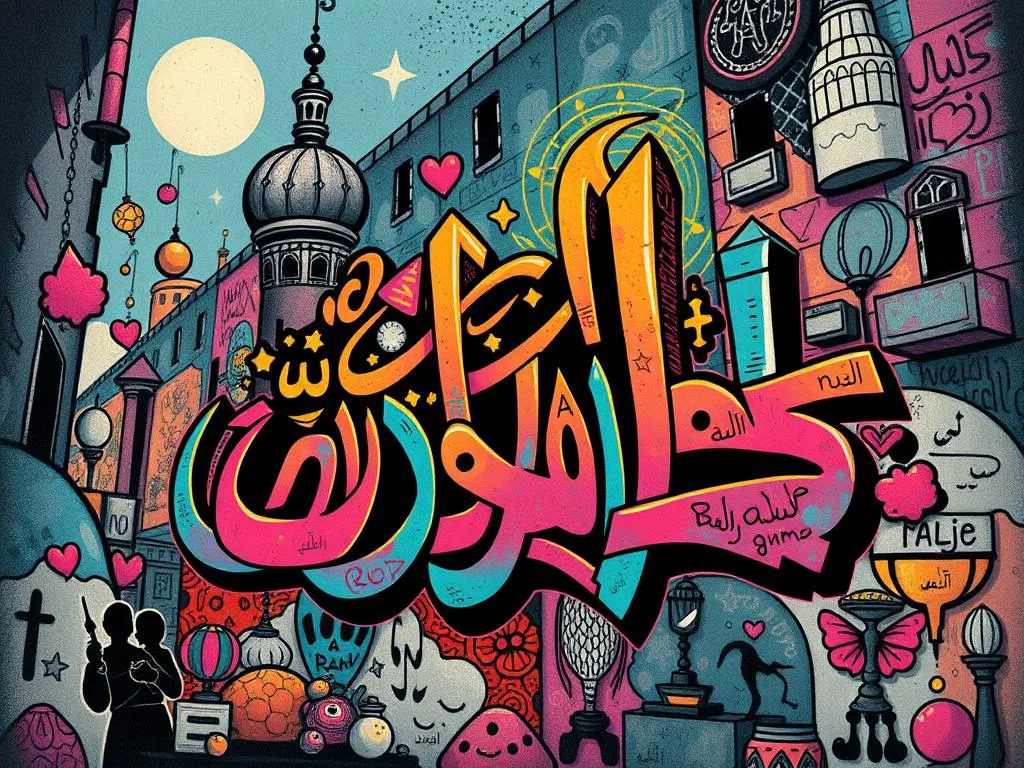Dreams In Arabic Culture

Dreams are a fascinating part of human experience, and in Arabic culture, they hold a special significance. For centuries, dreams have been viewed as a window into the soul, a source of guidance, and a means of communication with the divine. This blog post aims to explore the rich tradition of dream interpretation in Arabic culture, shedding light on its historical context, key traits, and symbolic meanings.
About Dreams in Arabic Tradition
In Arabic tradition, dreams are not merely random images that occur during sleep; they are deeply rooted in history and spirituality. Many cultures regard dreams as messages from a higher power, but in Arabic culture, this belief is especially pronounced.
Historically, dreams have played a crucial role in various aspects of life, from personal decisions to communal events. Ancient texts, such as the Quran, include references to dreams, reinforcing their importance. For example, the story of the Prophet Joseph (Yusuf) illustrates how dreams can foretell future events and guide individuals.
Key Traits of Dreams
Dreams in Arabic culture possess several defining traits:
- Symbolism: Unlike straightforward narratives, dreams often convey messages through symbols. Each element can carry multiple meanings depending on the context.
- Cultural Context: The interpretation of dreams is influenced by cultural norms, values, and beliefs, making it essential to consider the dreamer’s background.
- Spiritual Connection: Many believe that dreams can serve as a bridge between the earthly realm and the spiritual world, allowing for divine guidance.
Symbolic Meanings in Dreams
The symbolic meanings associated with dreams are rich and varied. Common themes include:
- Animals: Animals in dreams often represent different traits. For instance, a lion may symbolize strength, while a snake could indicate betrayal or deceit.
- Water: Water is a powerful symbol in dreams, often representing emotions or the subconscious. Calm water may indicate peace, while turbulent waters might suggest turmoil.
- Travel: Dreams about travel can signify personal growth or a journey towards self-discovery.
Understanding these symbols is essential for interpreting dreams within the context of Arabic culture.

Dream Interpretation in Arabic Culture
In Arabic culture, the practice of dream interpretation is both an art and a science. It involves analyzing the various elements of a dream to uncover its deeper meanings and emotional connections.
Core Meanings of Common Dream Elements
Certain dream elements are frequently encountered and carry specific meanings:
- Falling: This common dream can signify feelings of insecurity or a loss of control in one’s life.
- Chasing: Being chased in a dream may indicate anxiety or unresolved issues in the dreamer’s waking life.
- Flying: Dreams of flying often symbolize freedom, ambition, or a desire to escape from reality.
Each of these elements can evoke strong emotions and connect deeply with the dreamer’s psyche.
Emotional Connections in Dreams
Dreams can stir powerful emotions, leaving a lasting impact on the dreamer. In Arabic culture, the emotional weight of a dream can often guide its interpretation. For example:
- A dream about a deceased loved one may evoke feelings of grief, prompting the dreamer to reflect on their relationship and unresolved feelings.
- A joyful dream about a wedding can signify hope, love, and new beginnings.
These emotional connections are vital in understanding the messages conveyed through dreams.
Messages in Dreams
In Arabic interpretive practices, dreams are seen as carriers of important messages. Some potential messages include:
- Warning Signs: Dreams may serve as warnings about potential dangers or decisions that require careful consideration.
- Encouragement: A dream may encourage the dreamer to pursue their goals or dreams, reinforcing their ambitions.
- Reflection: Dreams can prompt introspection, urging the dreamer to confront unresolved issues or fears.
Recognizing these messages can help individuals navigate their personal journeys more effectively.
Related Dreams and Symbolism
Within Arabic cultures, certain dream scenarios recur frequently, revealing a rich tapestry of shared experiences and interpretations. By examining these common themes, we can better understand the underlying connections between different symbols and their meanings.
Common Dream Scenarios
Some common dream scenarios reported in Arabic culture include:
- Dreams of Abandonment: These dreams reflect feelings of isolation, often stemming from real-life experiences of neglect or loss.
- Dreams of Abundance: Dreams featuring wealth or prosperity can symbolize the dreamer’s desires for success and fulfillment.
- Dreams of Conflict: Dreams depicting fights or arguments may mirror internal struggles or external conflicts in the dreamer’s life.
Symbol Connections
The connections between different symbols and themes can be striking. For instance, dreams of water might appear alongside themes of travel, suggesting a journey through one’s emotions. Similarly, dreams of animals may correlate with feelings of power or vulnerability.
These interrelated symbols enrich the practice of dream interpretation, offering deeper insights into the dreamer’s psyche and experiences.
Conclusion
In summary, dreams in Arabic culture are more than mere fantasies; they are significant messages that can guide, warn, and inspire. The historical context and symbolic meanings associated with dreams reveal a profound understanding of the human experience. By engaging with our dreams and reflecting on their meanings, we can better navigate our waking lives and embrace the wisdom they offer.
Dream interpretation can be a powerful tool for personal growth and self-discovery. As we explore our dreams, we can gain insights into our emotions, desires, and fears, allowing us to lead more fulfilling lives. The rich tradition of dreams in Arabic culture reminds us of the importance of this timeless practice, encouraging us to look within and seek the hidden messages waiting in our dreams.









